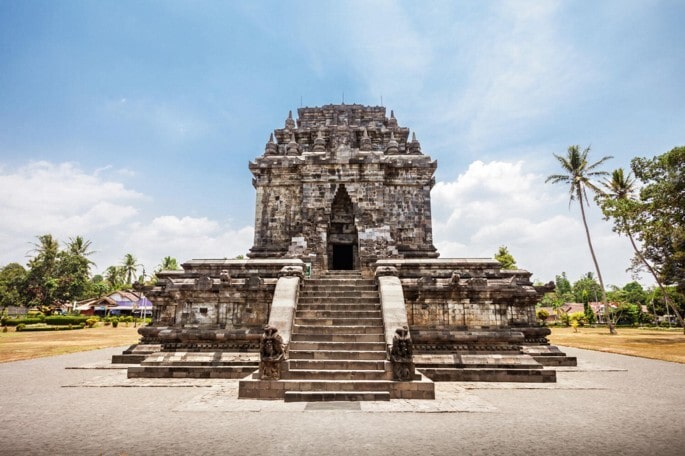Buddhist Temples in Nusantara
Source: i0.wp.com
As we know, there were times when Buddhist kingdoms ruled Indonesia. And as a result, these kingdoms left evidence of their existence in various forms. One of the pieces of evidence is the number of temples scattered in various regions in Indonesia.
Even though the temples have undergone restoration, they don’t change their initial shape of the temples. Therefore, until now, we can observe and learn the history of the existence of the Buddhist kingdoms through these temples. Here are some popular Buddhist temples in Nusantara along with a brief description of the temples.
- Borobudur Temple

Source: img.freepik.com
Discussing Buddhist-style temples, of course, this list must include the Borobudur Temple. Located in Magelang, Central Java, Borobudur Temple was formed from stupas and was built in the 8th century AD by Mahayana Buddhists. This temple is also the largest Buddhist monument in the world and considered as the world cultural heritage by UNESCO. Until now, Borobudur Temple is still used as a place of worship for Buddhists, especially during the commemoration of the Trisuci Vesak Day.
- Sewu Temple

Source: img.freepik.com
Sewu Temple is the largest Buddhist temple complex after the Borobudur temple. This temple is located in Sleman, Daerah Istimewa Yogyakarta, and was built in the 8th century during the Syailendra dynasty, the age of this temple is estimated to be older than the Borobudur temple. The name Candi Sewu itself means a thousand temples, although in reality only 249 temples were found in this complex.
- Mendut Temple

Source: media.springernature.com
Mendut Temple is a Buddhist temple located in Magelang, Central Java, that was built during the reign of King Indra of the Syailendra Dynasty. It is estimated that the age of the Mendut temple is also older than the age of the Borobudur Temple. Inside the Mendut Temple building, there are three large Buddha statues, namely Dhyani Buddha Wairocana with a dharmacakramudr hand gesture (mudra), and flanked by the Awalokiteśwara (Padmapāņi) statue on the left side and the Wajrapāņi statue on the right side.
References:
https://www.tokopedia.com/blog/candi-hindu-buddha-indonesia-edu/
https://candi.perpusnas.go.id/temples/deskripsi-jawa_tengah-candi_mendut
Image Sources:

